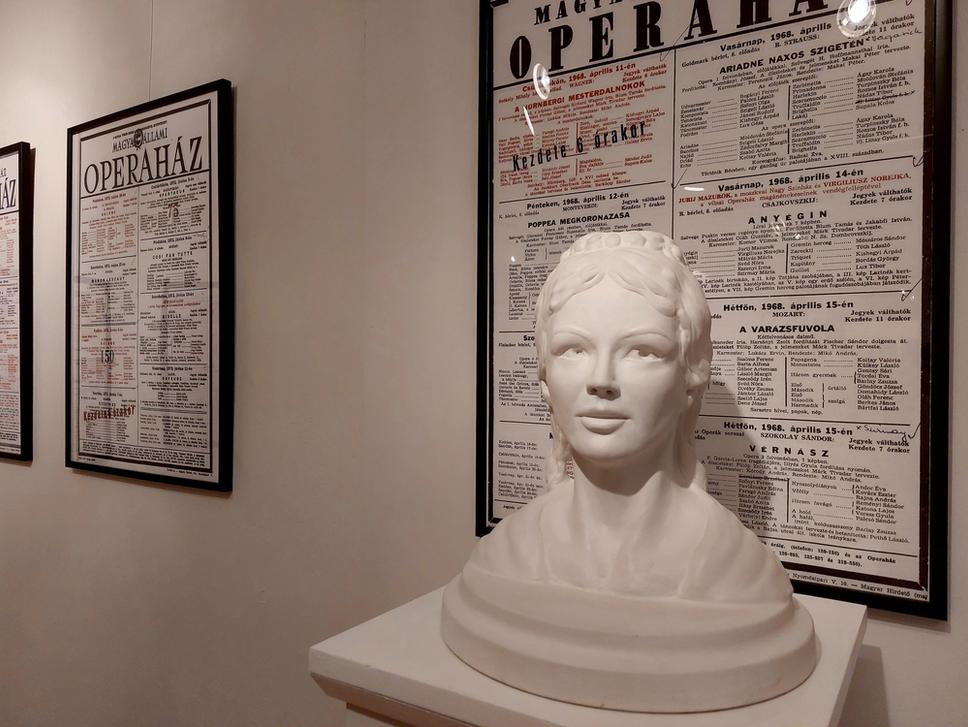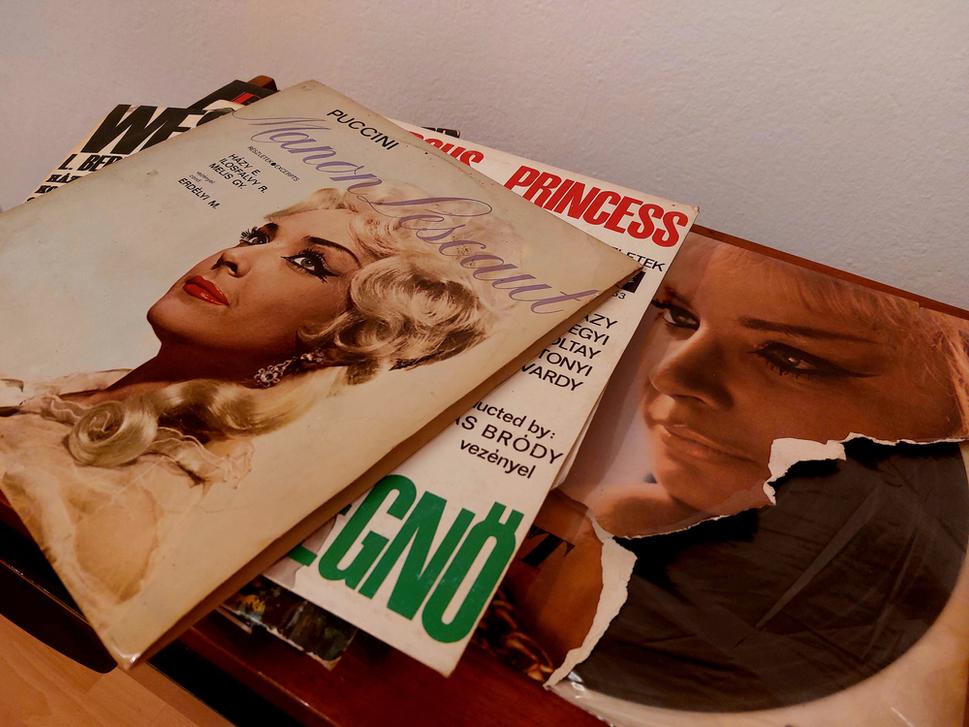As a young girl Böbe shared everything with her three little sisters and helped others, but one day her mother saw her coming home from school without her coat.
She asked, “Where did you leave your coat?”She asked, “Where did you leave your coat?”
“I saw a little girl who didn’t have a coat and it was very cold, so I gave it to her,” Böbe replied.
Erzsébet Házy, or Böbe as she was called since childhood, approached opera the same way: with love, determination and a sense of sacrifice. The Hungarian soprano rarely felt satisfied with her herself; despite first starring in the Hungarian Opera House in 1954 as Cherubino in Mozart’s ‘The Marriage of Figaro’ and as Oscar in Verdi’s ‘A Masked Ball’, trying so hard to give her audience the best of herself and be the greatest, even losing some weight.
“As Cherubino at the premiere – how to put it – I was simply ‘good-looking’ and that’s why I liked what I did,” she said in an interview several decades ago. “Two years later, during a performance, the role suddenly changed inside me and I portrayed this charming teenager with a loving nature, as it really should be.”
Her radiant beauty and girlish charm, perfect singing technique and instinctive body gestures, as well as her facial expressions, instantly made Házy an audience favourite.
“Her name sold out opera houses,” said Terézia Klemen, chair of the Franz Lehár civic association and author of a Hungarian-language book about the life of Erzsébet Házy, ‘Manon of the Century’.
Born in September 1929 at a maternity hospital on Zochova Street in Bratislava, she was the eldest of four siblings, all girls. Here she started singing and playing the piano and learnt fluent Slovak and German, which came in handy years later.
Bratislava, with its rich classical music history, was a multicultural city at that time.
However, a decade later her family was forced to settle in Budapest due to ongoing evictions and tensions between Hungary and Czechoslovakia. In Budapest, Házy attended a music school, joined the Hungarian Radio Choir and later on, in 1951, landed a scholarship at the Hungarian Opera House thanks to her singing teacher, György Miklós Kerényi, and her flawless performance of the ‘Queen of the Night’ aria from Mozart’s opera ’The Magic Flute’.
“Erzsébet Házy was the greatest talent of the last 40 years, a dynamic individual with a fiery temperament,” the teacher recalled in an interview, as quoted in Klemen’s book. “I was one of the first to notice it.”
A quick learner, she portrayed a number of roles in the fifties, including Nedda in Leoncavalli’s ‘Pagliacci’, Lola in Mascagni’s ‘Cavalleria rusticana’, Poppea in Monteveredi’s ‘The Coronation of Poppaea’, Eva in Wagner’s ‘The Master-Singers of Nuremberg’, Cupid in Gluck’s ‘Orpheus and Eurydice’, and Tatyana in Tchaikovsky’s ‘Eugene Onegin’.
Házy played and sang Tatyana the longest in her career, for a quarter century, according to Klemen. She also performed the role at the Bolshoi Theatre in Moscow.
In 1957, she wowed the audience with her portrayal of Mimi the seamstress from Puccini’s ‘La Bohème’, her first Puccini performance. She reached her career peak in 1961 when she was asked to play Manon Lescaut from Puccini’s eponymous opera, which she sang more than a hundred times at the opera house in Budapest.
“She sang and played the character beautifully, clearly, coquettishly, fatally and painfully, in love, she completely transformed herself into the role,” Klemen said.
People began to call her the Manon of the Century.
Experts agree that she gave her best performances when singing the works of Mozart, Verdi and Puccini.
“In the history of Hungarian opera performances, she is perhaps the Puccini heroine par excellence,” said music historian Tibor Tallián back in the day. “The same invincibly conquering eroticism radiated from her like in the time of Elza Szamosi [one of the greatest opera singers in Hungary in the early 20th century], but her tools were much richer both vocally and as an actor.”
She also sang Pamina in Mozart’s ‘The Magic Flute’ and Isolier in Rossini’s ‘Count Ory’ comic opera.
Throughout her career she won several awards, recorded a number of LPs, did a voiceover for Disney’s Snow White in Hungarian, and appeared in several successful films. Zoltán Farkas’ ‘Adventure in Gerolstein’, a historical musical from 1957, was one of her first film experiences.
“She was a conqueror and she conquered, a miracle of the stage who shone and radiated,” wrote her good friend and literary historian Elemér Szeghalmi about her.
When a film journalist asked Házy in 1959 about whether she liked opera or film better, she said, “Both. I want to play modern roles in the opera - Menotti, Britten, Orff - and in film I want to perform drama. But right now, I’m flirting with a third genre, operetta.”
Her talent and beauty that paved the way for her success were undeniable.
A year after the interview, the Hungarian soprano appeared on the cover of the Hungarian magazine Film, Színház, Muzsika. She wore a costume with daring cleavage. The paper achieved unparalleled success in Hungarian press history: more than 100,000 copies sold out in a few hours.
Yet, her personal life was a passionate disaster. Házy married three times.
“She suffered a lot, but she never complained to anyone,” her mother once said on a radio interview. “Opera was everything to her.”
Her personal problems eventually caught up with her.
In addition to depression and alcoholism, she began to suffer problems with her voice and memory. In 1982 she dies of cancer at 53. Thousands of fans arrived at the Erkel Theatre, part of the Hungarian State Opera in Budapest, to say their final goodbyes to the Hungarian prima donna.
Házy once uttered that she would want to be at least as good as the world famous US opera artist Maria Callas.
“I wouldn’t sing if I didn’t want to approach Callas one day and I wouldn’t perform if I felt that it was hopeless for me to reach the level of the greatest,” the opera performer said in an interview many years ago.
Though her story is little known to the world outside Hungary since she spent her adult life under communism, it is very similar to Callas’. They were popular sopranos, their personal lives were not a fairy-tale, and they died young.
“Art is not worth doing with little ambition,” maintained Házy, who has since become known as the Hungarian Callas.


 Erzsébet Házy was a successful Hungarian opera artist whose private life was a passionate disaster. (source: Peter Dlhopolec)
Erzsébet Házy was a successful Hungarian opera artist whose private life was a passionate disaster. (source: Peter Dlhopolec)
 The Museum of Hungarian Culture in Bratislava held an exhibition about Házy's life during the summer. (source: Peter Dlhopolec)
The Museum of Hungarian Culture in Bratislava held an exhibition about Házy's life during the summer. (source: Peter Dlhopolec)
 People began to call Házy Manon of the Century after the main character of a Puccini opera. (source: Peter Dlhopolec)
People began to call Házy Manon of the Century after the main character of a Puccini opera. (source: Peter Dlhopolec)
 In addition to opera performances, Erzsébet Házy recorded several LPs and appeared in a number of film musicals. (source: Peter Dlhopolec)
In addition to opera performances, Erzsébet Házy recorded several LPs and appeared in a number of film musicals. (source: Peter Dlhopolec)